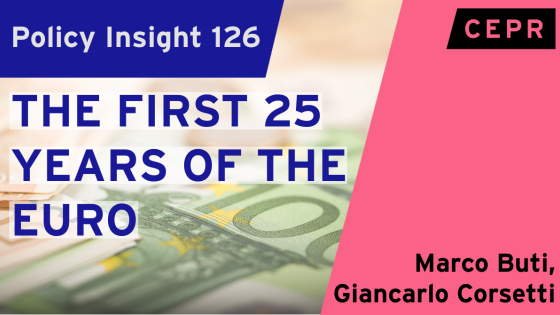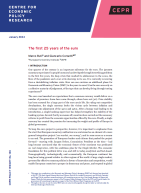The Policy Insight chronicles the euro's history in four distinct phases, each shaping the trajectory of the European Economic and Monetary Union (EMU): over-optimism and the great misallocation (1999-2008); crises and fragmentation – the unstable EMU (2009-2019); cooperation amidst crisis – responding to Covid-19 (2020-21); inflation surge and institutional deadlocks (2022-4).
Lessons from the past highlight the interconnectedness of macroeconomic governance and the structural dynamics of the Single Market. The sovereign debt crisis of the second decade exposes the limitations of the ‘put your house in order’ approach, emphasising the need for a more comprehensive strategy. The response to the Covid-19 pandemic demonstrates the EU's capacity to learn from crises, but questions linger about its ability to ensure a balanced policy mix, create incentives for reform, and effectively manage large shocks. The recent inflation crisis emphasises the importance of a policy framework that ensures stability and guides responses to potential side effects. What becomes clear is that the euro area’s stability depends on crisis-driven decision-making, the key challenge at this juncture is to institute and execute necessary reforms during non-crisis times.
How should the reform of EMU’s architecture be approached? The authors highlight the risk of national policies undermining the Single Market due to a lack of macroeconomic tools at the EU level. To address this, the Policy Insight proposes a ‘euro area trilemma’ framework emphasising the need for a stable single currency, a well functioning Single Market, and macro-financial stability. The current incomplete union is depicted as not simultaneously compatible with both the Single Market and a stable currency. The reform goal is to establish an effective economic constitution for the euro area, avoiding fragmentation and ensuring stability.
What needs to be done? The authors discuss strengthening and complementing the three legs of EMU – monetary policy, fiscal governance, and the ‘no bailout’ clause. They underscore the importance of ‘vertical coordination’ for the euro area-wide fiscal stance, advocating for the establishment of a union-wide central fiscal capacity to synchronise and complement national fiscal policies and the ECB, particularly in the event of substantial economic shocks. The authors debate the 'no bail out' clause, proposing the acknowledgment of shared risks and the implementation of two-way, insurance-based solidarity mechanisms. They also propose an EU industrial policy that prioritises collective investments in European public goods. The authors also stress the importance of completing the Banking Union and the sluggish progress of the Capital Markets Union (CMU), which are key to enhance its pivotal role in facilitating green and digital transitions.
The resilience of the euro rests on a political drive towards European integration which, despite everything, is still powerful. The history of European monetary cooperation gives some reason for optimism and can inspire policymakers to drive reforms to strengthen the economic architecture of the euro area. To achieve this political leadership is of the essence.





